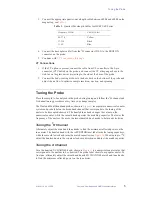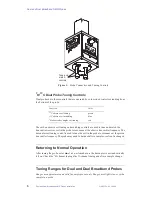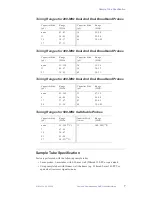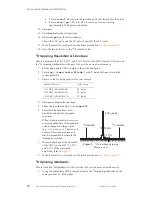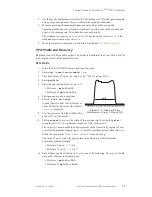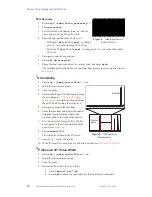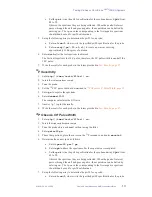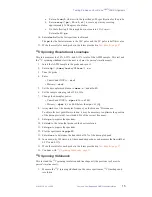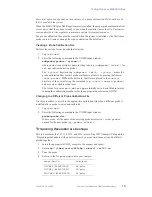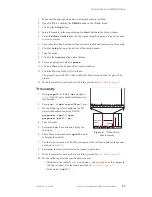
01-999124-00 J 0606
Dual and Dual Broadband NMR Probes Installation
19
Testing Probes on MERCURYplus
Successful operation depends on the existence of a probe calibration file for each probe
that is used with the system.
When the MERCURYplus NMR spectrometer is installed, the proper probe calibration files
are set up, so that the system is ready to use when the installer leaves the site. Customers
must update these files regularly to maintain optimal system performance.
The probe calibration files must be created when the system is installed or the first time a
probe is used. Create or change the probe calibration file as follows:
Creating a Probe Calibration File
Perform these steps for each probe that is tested.
1.
Log in as
vnmr1
.
2.
Enter the following command in the VNMR input window:
addprobe(probe<,'system'>)
where
probe
is a descriptive name for the probe (e.g.,
addprobe('id5mm')
for
an 5-mm indirect detection probe).
The
'system'
keyword (e.g.,
addprobe('id400','system')
makes the
probe calibration files for this probe available to all users by placing the files in
/vnmr/probes
. Without the keyword, the files are placed in the
vnmrsys
directory of the user entering the command (e.g.,
~vnmr1/vnmrsys/probes
)
and are only available to that user.
The values for power,
pw90
,
dmf
, and
pp
are initially set to 0 and filled in later by
running the calibration procedures for the appropriate nuclei using GLIDE.
Changing to a Different Probe Calibration File
Use this procedure to switch to the appropriate calibration file when a different probe is
installed after a probe is tested and calibrated,.
1.
Log in as
vnmr1
.
2.
Enter the following command in the VNMR input window:
probe=probe_dir
Where probe_dir the name of the existing probe directory in
/vnmr/probes
named for the new probe (e.g.,
probe='sw5mm'
).
1
H Spinning Resolution & Lineshape
This test measures the 0.11%, 0.55%, and 50% levels of the CHCl
3
sample. This and the
1
H spinning sidebands test (the next test) must be passed simultaneously and both tests
plotted together.
1.
Insert the appropriate CHCl
3
sample in the magnet and spin it.
2.
Enter
rtp('/vnmr/tests/H1lshp')
nm
nt=1 vs=100 su
.
3.
Tune the probe.
4.
Enter a value for
pw
appropriate for your sample:
Sample (Part No.)
Value for pw
1% CHCl
3
, (00-968120-89)
90° pulse
5% CHCl
3
, (00-968120-99)
30° pulse
20% CHCl
3
, (00-968120-76)
20° pulse

